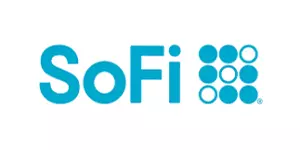System requirements for Windows 10
Before embarking on the upgrade journey, it’s essential to ensure that your device meets the minimum system requirements for Windows 10. Here are the key specifications:
| Component | Minimum Requirement |
|---|---|
| Processor | 1 GHz or faster processor or System on a Chip (SoC) |
| RAM | 1 GB for 32-bit or 2 GB for 64-bit |
| Hard Disk Space | 16 GB for 32-bit or 20 GB for 64-bit |
| Graphics Card | DirectX 9 or later with WDDM 1.0 driver |
| Display | 800 x 600 resolution or higher |
It’s important to note that these are the minimum requirements, and for optimal performance, it’s recommended to have a more powerful system with higher specifications.
How to check if your device is eligible for the upgrade
Before proceeding with the upgrade process, you should verify if your current device is eligible for the Windows 10 upgrade. Microsoft provides a simple and convenient tool called the “Get Windows 10” app, which can assess your system’s compatibility and guide you through the upgrade process.
Here’s how you can check your device’s eligibility:
- Open the “Get Windows 10” app on your current Windows 7 or Windows 8.1 system.
- Click on the “Check your PC” button.
- The app will scan your system and provide a detailed report on its compatibility with Windows 10.
- If your device meets the requirements, you will be presented with the option to reserve your free upgrade.
If your device is not compatible with Windows 10, you may need to consider purchasing a new system or upgrading specific components to meet the minimum requirements.
Steps to upgrade to Windows 10
Once you have confirmed your device’s eligibility, you can proceed with the upgrade process. Here are the steps to follow:
- Back up your data: Before upgrading, it’s crucial to create a backup of your important files, documents, and settings. This will ensure that you can restore your data in case of any unforeseen issues during the upgrade process.
- Check for updates: Ensure that your current operating system is up-to-date by installing any available updates. This will help ensure a smooth transition to Windows 10.
- Download the Windows 10 installation files: You can download the installation files directly from Microsoft’s website or use the “Get Windows 10” app.
- Run the installation: Once the download is complete, run the installation file and follow the on-screen instructions. The process may take some time, depending on your system’s specifications and internet connection speed.
- Customize your settings: After the installation is complete, you will be prompted to customize various settings, such as your preferred language, keyboard layout, and privacy options.
- Activate Windows 10: If you were running a genuine copy of Windows 7 or Windows 8.1, your Windows 10 license should be automatically activated. If not, you may need to enter a valid product key.
It’s important to note that the upgrade process may take several hours, depending on your system’s specifications and internet connection speed. During this time, it’s recommended to avoid interrupting the process or turning off your device.
Troubleshooting common issues during the upgrade process
While the upgrade process is generally smooth, you may encounter some issues along the way. Here are some common problems and their solutions:
- Compatibility issues: Some older applications or hardware components may not be compatible with Windows 10. In such cases, you may need to update the software or drivers, or consider replacing the incompatible components.
- Installation errors: If you encounter any errors during the installation process, try running the Windows 10 installation troubleshooter or consult Microsoft’s support resources for guidance.
- Activation issues: If you’re unable to activate your copy of Windows 10, ensure that you have a valid product key or contact Microsoft support for assistance.
- Performance issues: If you experience performance issues after upgrading to Windows 10, try updating your drivers, disabling unnecessary background processes, or optimizing your system settings.
Remember, patience and persistence are key when troubleshooting issues. If the problem persists, don’t hesitate to seek professional assistance or consult online forums and support communities for additional guidance.
Tips for a smooth upgrade experience
To ensure a seamless and hassle-free upgrade to Windows 10, consider the following tips:
- Check system requirements: Before upgrading, thoroughly review the system requirements and ensure that your device meets or exceeds them.
- Free up disk space: Windows 10 requires a significant amount of disk space for installation. Clear out unnecessary files, programs, and temporary data to free up space on your hard drive.
- Disable antivirus software temporarily: Some antivirus programs may interfere with the upgrade process. Consider temporarily disabling your antivirus software during the installation and re-enabling it once the upgrade is complete.
- Connect to a stable internet connection: A stable and high-speed internet connection is essential for downloading the installation files and updates.
- Be patient: The upgrade process can take several hours, depending on your system’s specifications and internet connection speed. Avoid interrupting the process or turning off your device during the installation.
By following these tips, you can minimize potential issues and ensure a smooth transition to the latest version of Windows.
Introduction to $10,000 loans
While upgrading to Windows 10 can enhance your productivity and computing experience, there may be situations where you require additional financial resources. This is where a $10,000 loan can provide the necessary funds to tackle various personal or business needs.
A $10,000 loan can be a valuable financial tool for a variety of purposes, such as:
- Debt consolidation: Consolidating multiple debts into a single loan can help simplify your payments and potentially lower your overall interest rates.
- Home improvements: Whether it’s a kitchen remodel, a new roof, or energy-efficient upgrades, a $10,000 loan can help finance home improvement projects.
- Business expansion: For entrepreneurs and small business owners, a $10,000 loan can provide the capital needed to expand operations, purchase inventory, or invest in marketing efforts.
- Emergency expenses: Unexpected medical bills, car repairs, or other unforeseen expenses can strain your finances. A $10,000 loan can provide a safety net during these challenging times.
- Educational expenses: Funding higher education or professional development courses can be a significant financial burden. A $10,000 loan can help cover tuition, fees, and other associated costs.
It’s important to note that while a $10,000 loan can be a valuable financial tool, it’s crucial to approach it responsibly and carefully evaluate your ability to repay the loan on time.
Factors to consider before applying for a $10,000 loan
Before embarking on the journey of securing a $10,000 loan, it’s essential to consider several key factors to ensure a well-informed decision. Here are some important considerations:
- Credit score: Your credit score plays a significant role in determining your eligibility and interest rates for a loan. Lenders typically favor borrowers with a good to excellent credit score, as it indicates a responsible borrowing history.
- Income and employment status: Lenders will evaluate your income and employment status to assess your ability to repay the loan. Stable employment and a consistent income stream can improve your chances of approval.
- Existing debt obligations: Lenders will consider your existing debt obligations, such as credit card balances, mortgages, or other loans, to determine your overall debt-to-income ratio. A lower debt-to-income ratio can increase your chances of approval.
- Loan purpose: Some lenders may have specific requirements or preferences regarding the purpose of the loan. Clearly stating your intended use of the funds can help streamline the application process.
- Collateral: Depending on the lender and loan type, you may be required to provide collateral, such as a vehicle or property, to secure the loan. This can potentially lower the interest rate but also carries the risk of losing the collateral if you default on the loan.
- Interest rates and fees: Carefully review and compare the interest rates and fees associated with different loan offers. Lower interest rates and fees can save you a significant amount of money over the life of the loan.
By carefully considering these factors, you can make an informed decision and increase your chances of securing a $10,000 loan on favorable terms.
Steps to ensure a guaranteed approval for a $10,000 loan
While there is no absolute guarantee of loan approval, following these steps can significantly increase your chances of securing a $10,000 loan:
- Improve your credit score: Before applying for a loan, take steps to improve your credit score by paying off outstanding debts, correcting any errors on your credit report, and maintaining a consistent payment history.
- Gather necessary documentation: Lenders typically require various documents to verify your identity, income, employment status, and credit history. Gather these documents in advance to streamline the application process.
- Shop around and compare offers: Research and compare loan offers from multiple lenders, including banks, credit unions, and online lenders. This will allow you to find the best interest rates and terms for your specific situation.
- Consider a co-signer or collateral: If your credit score or income is less than ideal, consider adding a co-signer with a strong credit history or providing collateral to secure the loan. This can improve your chances of approval and potentially lower the interest rate.
- Provide a detailed loan purpose: Clearly explain the intended purpose of the loan and how the funds will be used. Lenders are more likely to approve loans for specific and legitimate purposes.
- Apply for pre-approval: Many lenders offer pre-approval processes, which can give you an idea of your chances of approval and the potential loan terms before submitting a formal application.
- Maintain a stable income and employment history: Lenders want to see a consistent and stable income stream to ensure your ability to repay the loan. Avoid job changes or significant income fluctuations during the application process.
By following these steps and demonstrating your creditworthiness and financial responsibility, you can increase your chances of securing a guaranteed approval for a $10,000 loan.
How to use a 10-minute timer to improve productivity while upgrading to Windows 10
While upgrading to Windows 10 can be a time-consuming process, it’s important to maintain productivity and avoid wasting valuable time. One effective technique to boost your productivity is the use of a 10-minute timer, also known as the Pomodoro Technique.
The Pomodoro Technique is a time management method that involves working in focused intervals of 25 minutes, followed by short breaks of 5 minutes. After completing four of these 25-minute work sessions, you can take a longer break of 15-30 minutes.
Here’s how you can use a 10-minute timer to improve your productivity while upgrading to Windows 10:
- Set up the timer: Choose a timer app or website that allows you to set intervals of 10 minutes. Alternatively, you can use a simple kitchen timer or a stopwatch.
- Identify tasks: Make a list of tasks or activities you need to complete during the upgrade process, such as backing up data, downloading installation files, or customizing settings.
- Work in focused intervals: Set the timer for 10 minutes and work on one task without interruptions or distractions. When the timer goes off, take a short break of 2-3 minutes.
- Repeat the cycle: After the break, set the timer for another 10 minutes and continue working on the same task or move on to the next one.
- Take longer breaks: After completing four 10-minute work sessions, take a longer break of 15-30 minutes to recharge and refresh.
By working in focused intervals and taking regular breaks, you can maintain high levels of concentration and productivity throughout the upgrade process. This technique can help you stay on track, avoid burnout, and ensure that you make the most of your time while transitioning to the new operating system.
Remember, the key to success with the 10-minute timer is to strictly follow the intervals and avoid distractions during the work sessions. By combining this technique with the steps outlined earlier, you can seamlessly upgrade to Windows 10 while maintaining optimal productivity. To ensure a smooth and hassle-free upgrade to Windows 10, as well as secure a $10,000 loan for your personal or business needs, visit our website today. Our team of experts is dedicated to providing you with personalized guidance and support throughout the entire process. Take the first step towards enhancing your computing experience and achieving your financial goals by scheduling a consultation with us.

























